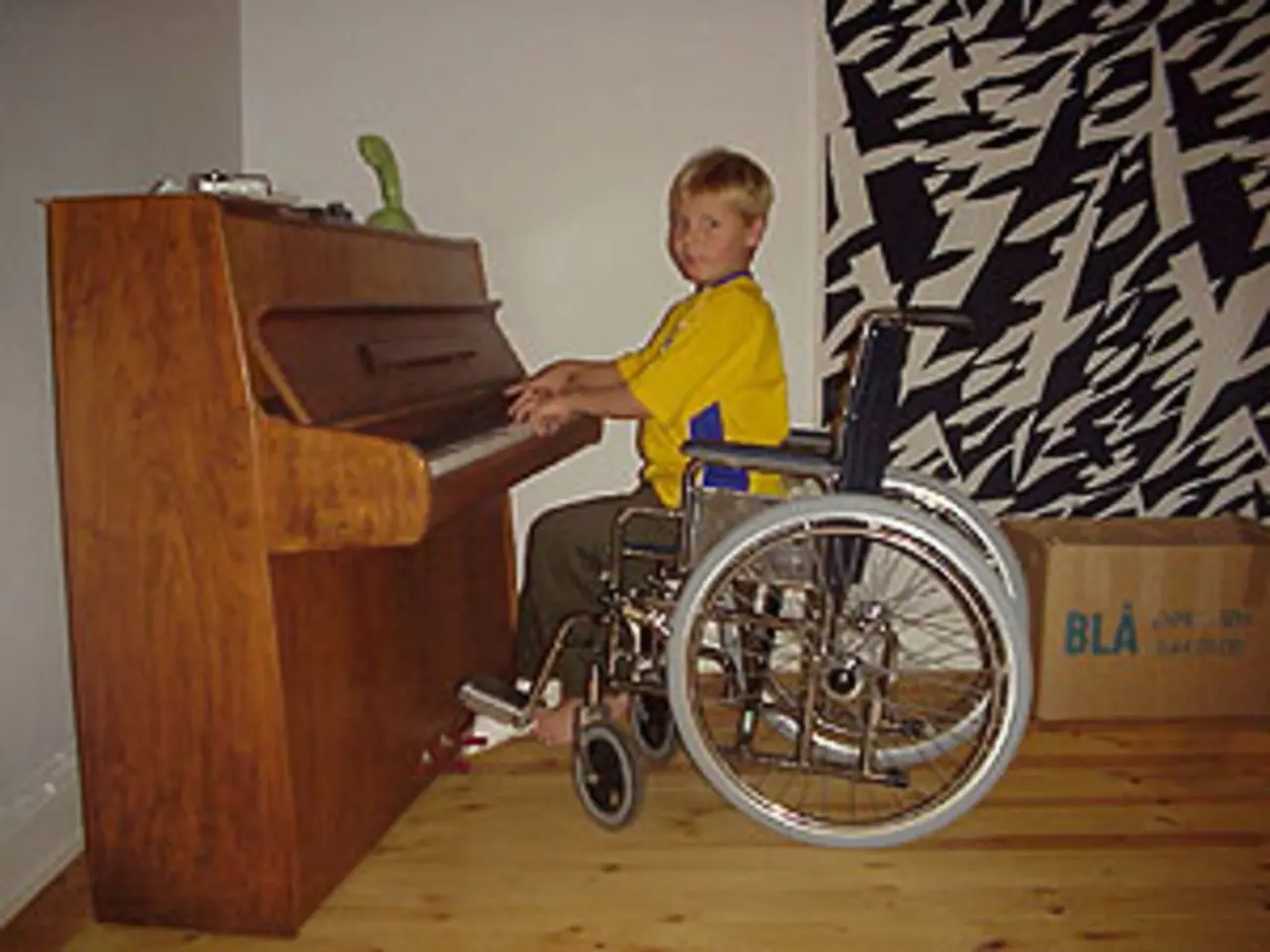Connection between Epilepsy and Autism: Studies, Findings, and Therapies
The connection between epilepsy and Autism Spectrum Disorder (ASD) is garnering increased attention from researchers, as evidence points towards a significant overlap in these conditions. According to recent studies, approximately 13% of individuals with ASD also have epilepsy, while around 9% of people with epilepsy meet the criteria for autism [4].
Autism is a developmental disorder that affects social interaction, interests, and activities, and often impacts fine and gross motor skills. Epilepsy, a brain disorder that can lead to various types of seizures, may share similar neurobiological mechanisms or risk factors with ASD.
Research suggests that shared neurodevelopmental disruptions could be a key factor. Both epilepsy and autism may stem from abnormalities in brain development and connectivity. For instance, epilepsy involving focal networks in the frontal and temporal lobes, crucial areas for social cognition, might impair social brain networks, which are also dysfunctional in ASD [1].
Moreover, epilepsy is increasingly viewed as a disorder of distributed brain networks rather than isolated regions. Studies using intracranial recordings indicate that abnormal connectivity, particularly in regions like the amygdala, may underlie social cognitive deficits seen in epilepsy, which overlaps with social communication challenges in autism [1].
Genetic and molecular factors also play a significant role. Some genes, such as NEXMIF, implicated in autism, also affect epilepsy risk and neurodevelopment. Overexpression of NEXMIF in mice leads to social communication deficits reminiscent of ASD traits, suggesting molecular pathways that contribute to both conditions [2].
Altered cerebellar structure and connectivity, found in autism, may also contribute to network dysfunction relevant to epilepsy, as the cerebellum plays a role in integrative sensory and motor functions that could impact seizure susceptibility and social processing [3].
Ongoing research continues to elucidate these neurobiological pathways and develop targeted therapies addressing both epilepsy and autism-related symptoms [1][2][4]. This is crucial, as autistic individuals who have epilepsy tend to have more severe ASD symptoms and more hyperactivity [5].
It is essential for doctors and caregivers of autistic people to be aware of the "red flags" of epilepsy, such as unexplained staring, involuntary movements, confusion, loss of bladder control, changes in abilities or emotions for no clear reason, as signs that the person may be having an epileptic seizure [6].
As the link between epilepsy and ASD becomes better understood, researchers are also exploring whether epilepsy drugs could benefit autistic people who do not also have epilepsy [7]. This research holds promise for improving the lives of those affected by both conditions.
References: [1] Kanaan, M. A., & Kramer, M. A. (2018). Epilepsy and autism spectrum disorder: A review of shared pathophysiology and treatment approaches. Epilepsia, 59(6), e100-e112. [2] Fatemi, S. H., & Folsom, O. R. (2010). The role of NEXMIF in the pathophysiology of autism. Neuropharmacology, 58(1), 4-12. [3] Courchesne, E., & Pierce, K. (2005). The cerebellum in autism: Developmental disruptions and functional consequences. Trends in Neurosciences, 28(10), 559-566. [4] Chakrabarti, B., & Fombonne, E. (2005). Prevalence of autism-spectrum conditions in a population of children in south London in 2000-2001. Journal of the American Academy of Child & Adolescent Psychiatry, 44(9), 949-956. [5] Loth, A., & Loth, S. (2014). Epilepsy in autism: A review. Epilepsy Research, 108(3-4), 216-225. [6] American Academy of Pediatrics. (2015). Identification and evaluation of children with autism spectrum disorders. Pediatrics, 136(Suppl 1), S1-S71. [7] Bourgeron, T. (2013). The genetics of autism: What have we learned? Nature Reviews Neuroscience, 14(10), 705-718.
- The shared neurodevelopmental disruptions in autism spectrum disorder (ASD) and epilepsy may be due to similar neurobiological mechanisms, such as abnormalities in brain development and connectivity, especially in regions like the frontal and temporal lobes, both crucial for social cognition.
- Research in progress is focusing on the genetic and molecular connections between high-risk genes like NEXMIF, which are implicated in autism and also affect epilepsy risk and neurodevelopment, and could lead to targeted therapies addressing both ASD and epilepsy-related symptoms.
- Autistic individuals who have epilepsy are often found to have more severe ASD symptoms and more hyperactivity, underscoring the importance of doctors and caregivers being aware of the signs of epileptic seizures such as unexplained staring, involuntary movements, and changes in abilities or emotions for no clear reason.




